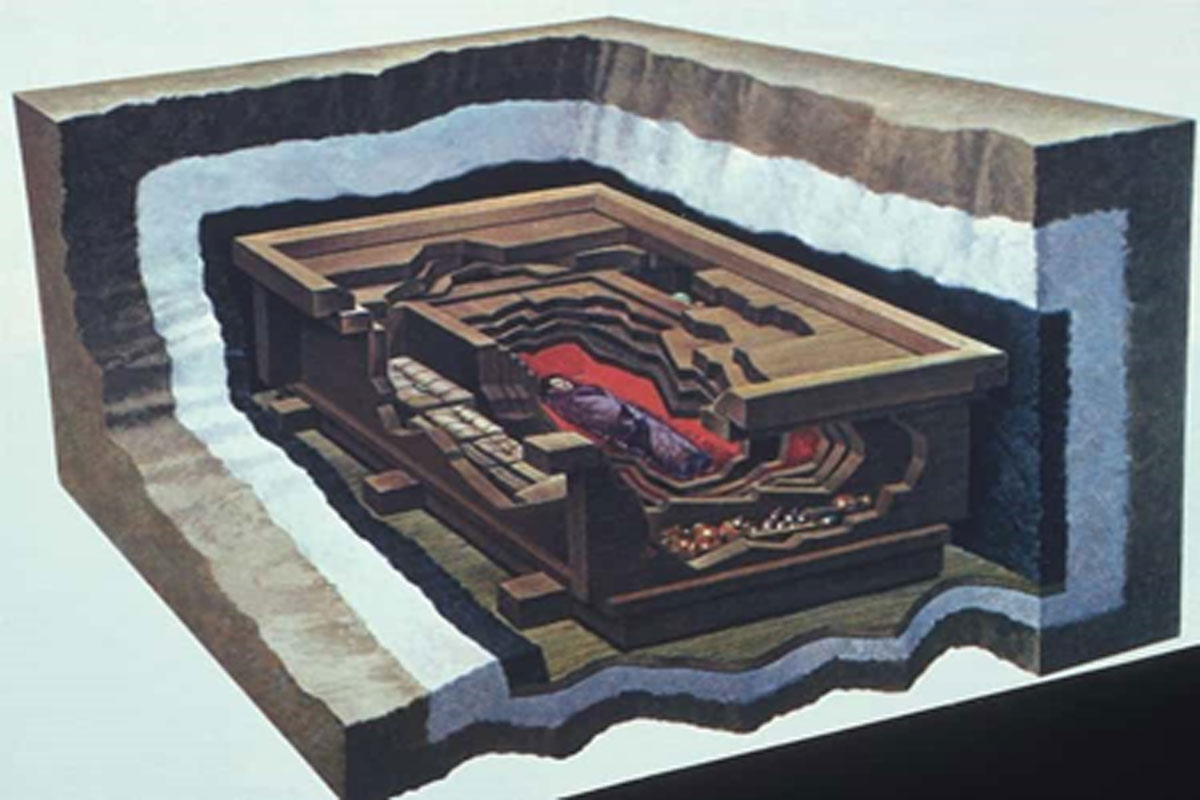
The Haunting Corpse Of Lady Dai Is The Most Perfect Mummy In Existence – And You Can Visit Her Today
Jessika M. Thomas
In 1971, workers were excavating an air raid shelter in Changsha, China, when they uncovered an archaeological find that fascinated the world: the eerily intact mummy of a woman who was so perfectly preserved, her corpse had barely decomposed. Pathologists were able to ascertain not only the cause of death, but her last meal as well. She has come to be known as “The Diva Mummy.”
Xin Zhui, also called Lady Dai during her lifetime, was the wife of a high-ranking Han Dynasty official named Li Chang. Lady Dai was born around 213 BC and is believed to have died in 163 BC at the age of 50. She was undisturbed in her tomb for over 2,000 years, before her eventual discovery in 1971.
China’s Lady Dai mummy mystery had scientists stumped. How was her body so-well preserved? Did the Han Dynasty’s mummification techniques differ so greatly from that of the Egyptians or the Japanese Buddhist monks’ mummification procedures
________________________________________
Xin Zhui’s Elaborate Tomb Was Ultimately Responsible For Her Perfect Preservation
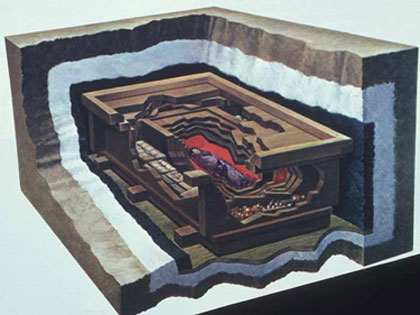 Photo: Metaweb / GNU Free Documentation License
Photo: Metaweb / GNU Free Documentation License
Xin Zhui’s tomb was extraordinary. Even if one discounts all the precious artifacts and the historical significance of the find, the construction of the tomb itself is a marvel of architectural genius. Shaped like a funnel, the entire floor area was covered with a paste-like soil, and the structure was then packed with moisture-absorbing charcoal. To ensure a dry resting place, the tomb was sealed with clay to keep oxygen and bacteria out of the chamber.
While she was lying peacefully inside a small pine coffin, that coffin rested inside a slightly more substantial pine box which in turn rested inside one even larger; this coffin was the funerary equivalent of a Russian nesting doll.
• The Diva Mummy Had Everything She Could Need For The Afterlife
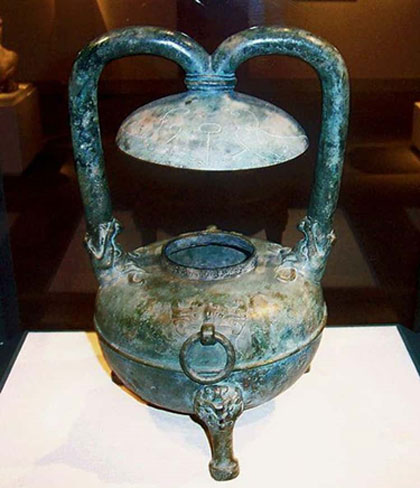 Photo: PericlesofAthens / Wikimedia Commons / Public Domain
Photo: PericlesofAthens / Wikimedia Commons / Public Domain
Xin Zhui’s family and friends made sure she had everything she enjoyed during her natural life in her afterlife as well. This didn’t just extend to trinkets, makeup, and toiletries, however; there were 162 wooden figurines representing the army of servants waiting to do her bidding in the next life. There was even an elaborate meal prepared and set out for her to ensure she didn’t arrive in the next life on an empty stomach
• Xin Zhui’s Tomb Wasn’t The Only One Found During The Excavation
When Xin Zhui’s tomb was discovered, her corpse quickly caused a sensation due to its unique condition. But other members of her elite family were also found during the excavation. Li Cang, Marquis of Dai and Chancellor of the Kingdom of Changsha, was located in in the first tomb. His wife, Xin Zhui, was in the second tomb, and one of their sons was in a third grave. Experts are unsure of the identity of the son, but estimate he was around 30 years old at the time of his death. The unnamed son’s tomb contained 20 silk manuscripts, several silk paintings, and seven medical manuscripts. The medical documents are extremely important, as they are the oldest recorded medical documents in the history of China.
• Unlike Other Women In The Han Dynasty, Xin Zhui Led A Privileged Life
 Photo: Unknown / Wikimedia Commons / Public Domain
Photo: Unknown / Wikimedia Commons / Public Domain
While little is known about Xin Zhui’s life, plenty of documentation exists regarding women’s roles within the Han Dynasty. Women were often subservient to not only their husbands but all men, including their uncles, fathers, and brothers. The case of Xin Zhui was unique. If a woman married anyone of political importance, she became a woman of wealth, power, and status. Zhui managed this when she was married to Li Cang, the Marquis of Dai.
Dr. Charles Higham, an anthropologist from the University of Otago in New Zealand said about Zhui: “She was an aristocrat. There would have been a lot of music, a lot of incense. There would have been servants at your beck and call. It must have been jolly good fun.
• The Diva Mummy Wasn’t Searching For Enlightenment
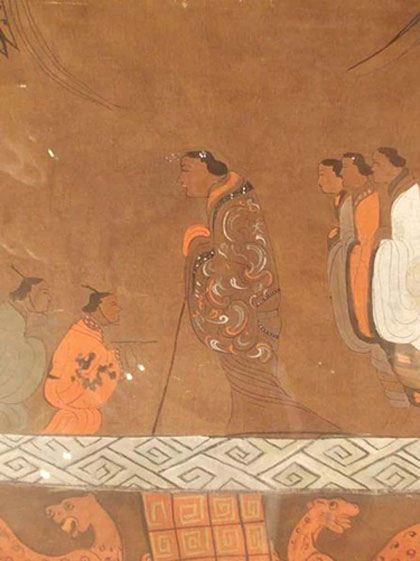 Photo: Flazaza / Wikimedia Commons / CC BY-SA 4.0
Photo: Flazaza / Wikimedia Commons / CC BY-SA 4.0
While no one can say with any certainty, some have surmised that Xin Zhui’s life was defined by luxury and self-indulgence. According to her autopsy, she had numerous health issues she may have brought upon herself through various bad habits. She was overweight. She had high blood pressure and gallstones, as well as a bad heart. Pathologists were able to determine the cause of death as a heart attack.
She still had melon seeds inside her stomach. Knowing that melon seeds are broken down by the body within an hour, it was a clear sign she died suddenly and shortly after her last meal.
• Whatever The Procedure For Lady Dai’s Mummification, It Certainly Worked
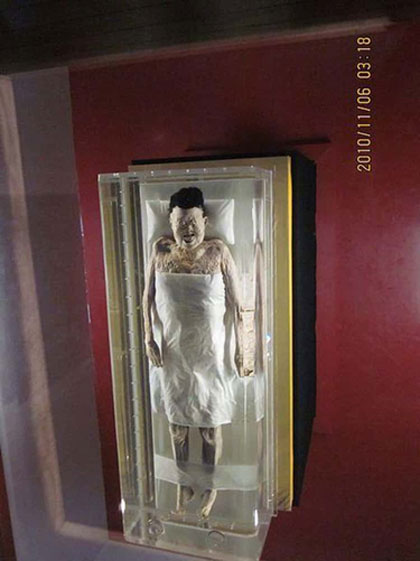 Photo: Huangdan2060 / Wikimedia Commons / Public Domain
Photo: Huangdan2060 / Wikimedia Commons / Public Domain
It goes without saying that Lady Dai wasn’t the first mummified person ever discovered; however, she is the most well-preserved mummy ever found. In a way, that is the biggest mystery presenting itself to those investigating her discovery – the history of mummification spans thousands of years and across countless cultures. What exactly made this particular instance of the mummification process so effective?
There have been many mummies found that were well-preserved, but none of them have been able to match up to the Diva.
Lady Dai’s mummified body still had all her hair, her organs, and tendons, allowing her joints to still bend. Even though she is over 2,000 years old, her mummified body looks all but brand new.
• The Mummification Process Dates Back Thousands Of Years
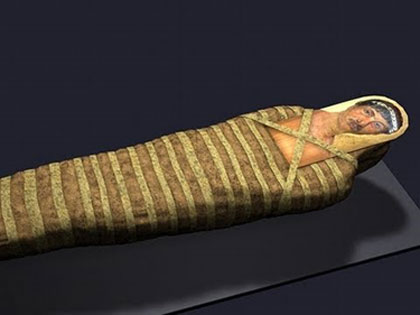 Video: YouTube
Video: YouTube
The idea itself of mummification was the byproduct of living in an arid environment. Bodies found in the dry desert sands of Egypt last so long because all the moisture had been naturally removed, thus leading the Egyptians to develop a process (circa 3500 BCE) to maintain the body for the afterlife. Typically, all the organs except for the heart would be removed from the body, and it would be covered with salt for the next 40 days to remove all moisture. This would be followed by perfumed oil and resins being rubbed on the body, then multiple layers of linen wrapped around the corpse and held in place by more linen strips. Afterwards, it was wrapped inside a large linen cloth and decorated with symbols.
• Xin Zhui May Help Scientists Better Understand The Preservation of Bodies
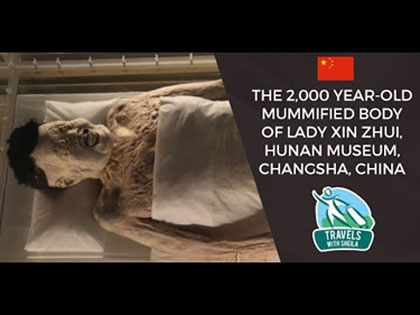 Video: YouTube
Video: YouTube
Lady Dai is displayed at the Hunan Provincial Museum, where all the admirers of China’s Diva Mummy can go pay homage to the lady who (sort of) solved the mystery of how to stay young for much, much longer. In 2003, scientists were able to create a secret compound and insert it in Zhui’s blood vessels, which so far has been able to assist with her preservation. Although mummification is hardly as popular as it once was, scientists continue to do research to learn more about the preservation of bodies, and Zhui’s remains have been integral to their research.
ranker.com





















